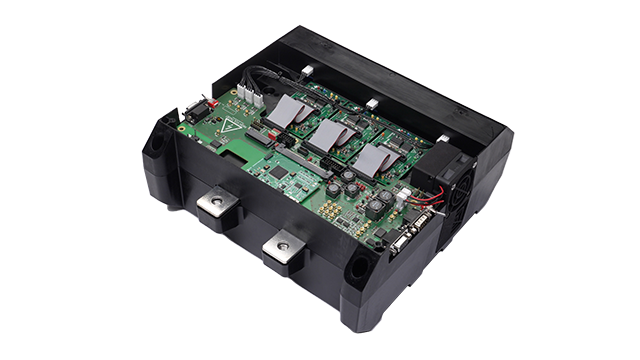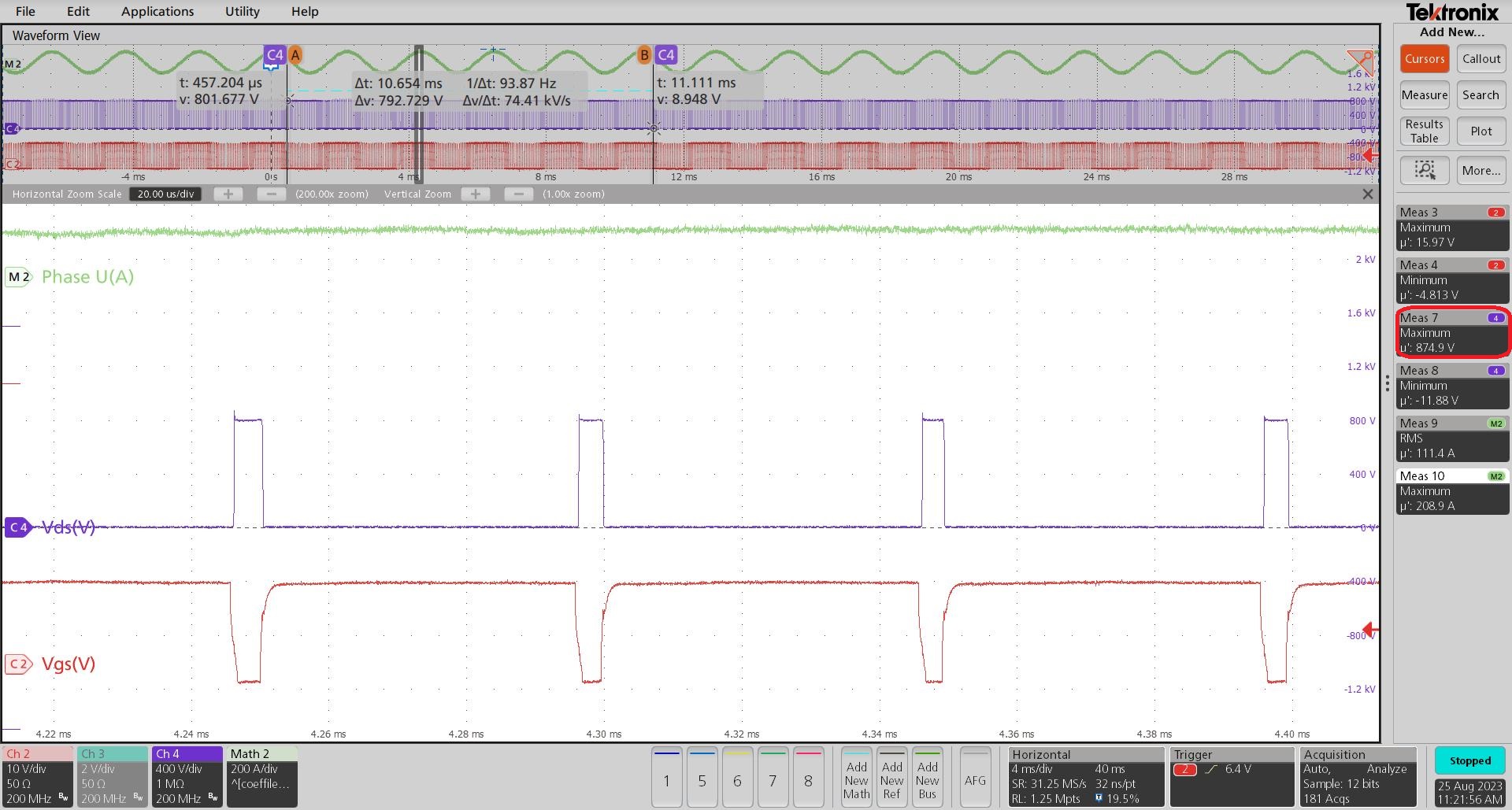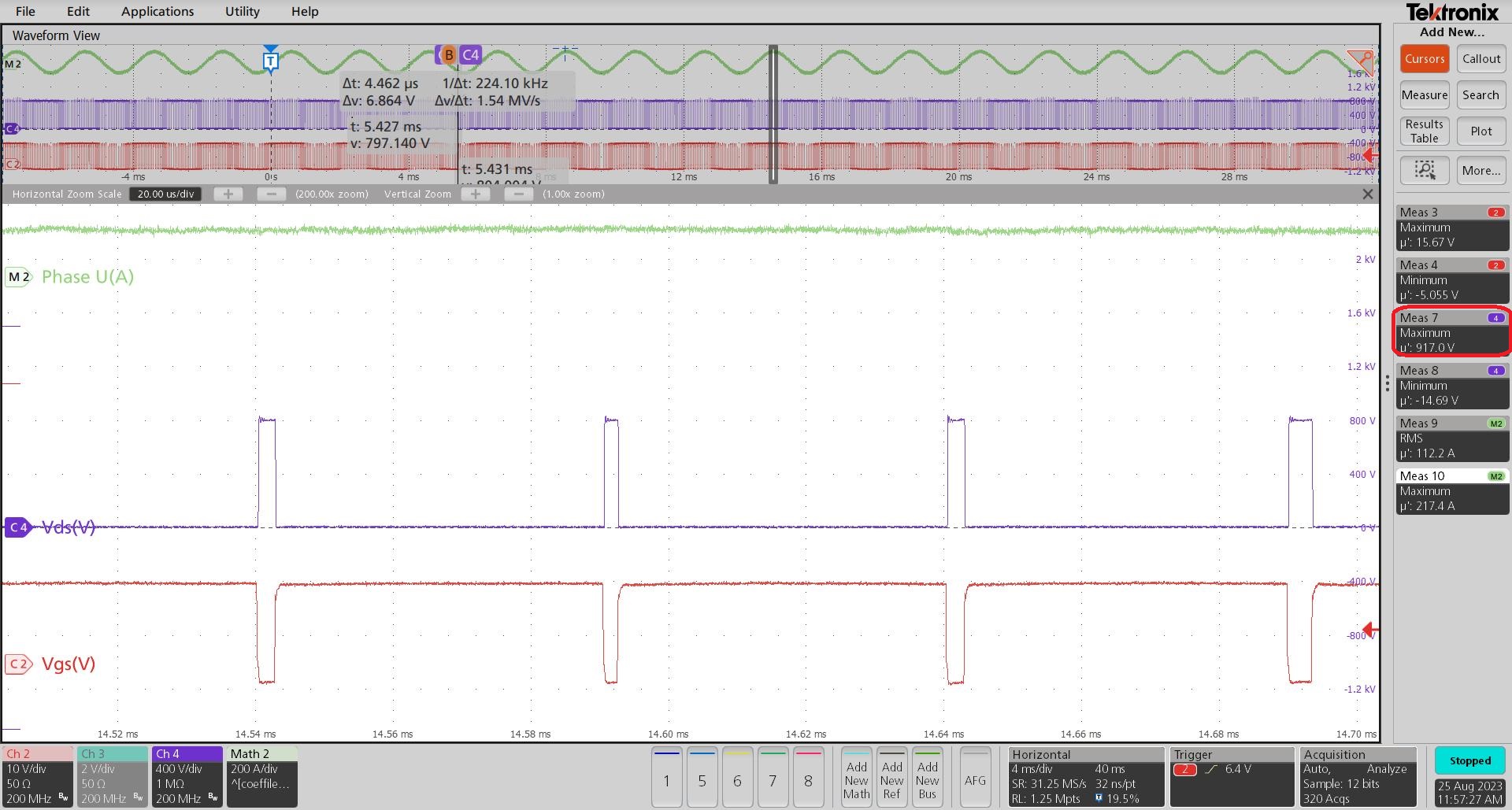-
Electrical Vehicle Improvements With a Highly Efficient Traction Inverter Design SPRADH3 September 2024 UCC5880-Q1 , UCC5881-Q1
-
Electrical Vehicle Improvements With a Highly Efficient Traction Inverter Design
Electrical Vehicle Improvements With a Highly Efficient Traction Inverter Design
Abstract
The traction inverter is one of the crucial parts of every electrical vehicle. The trend to go to 800V battery system and SiC devices with high switching frequency helped significantly in increasing inverter efficiency. To have a highly efficient system, both hardware and software need to have high performance, from the advanced technology ICs, layout, and precise sensors for the feedback signals, to the control algorithms and fast control loops that control the switches. Increased inverter efficiency means lower losses, but one of the main questions is what effect increased efficiency has on the electrical vehicle. In this paper, we show the systems requirements followed by high-power test results of 300kW, 800V traction inverter (TIDM-02014) and four key factors that are influenced by the inverter efficiency.
1 Introduction
The TIDM-02014 is a 300kW, 800V Traction inverter reference design developed by Texas Instruments in a collaboration with Wolfspeed. Gate driver, control board and control cards developed by Texas Instruments are combined with Wolfspeed's XM3 power modules to have a high-performance traction inverter system. This inverter can be controlled with two different MCUs, the AM263P and the TMS320F280039C. Design files, technical documentations and the software packages are available at TI.com. The TIDM-02014 reference design is shown in Figure 1-1.
 Figure 1-1 TIDM-02014
Figure 1-1 TIDM-020142 Traction Inverter System Requirements
Power levels in the traction inverters today go above 200kW. Requirements for the increase in the power density brings together the requirements for the increase in the motor speed. The speeds of a motor go up to 20000rpm. Since the efficiency has a direct effect on the driving range, automotive companies are doing the evaluation running some of the driving cycles (CLTC, WLTP). This document presents the efficiency during the CLTC together with the key parts which help in achieving the efficiency target.
2.1 Gate drivers
Earlier generations of the gate drivers used in HEV/EV were much simpler. Systems safety requirements have become more complex and additional features have been implemented to achieve higher efficiency. Although these features can be implemented discretely, having them inside the package saves a lot of the space on the board and reduces the system cost. Active short circuit (ASC), DESAT, soft turn-off, Miller clamp and on-fly programmable drive strengths are just some of the features that are implemented in the UCC5880-Q1 isolated gate driver.
Adjustable drive strength has a significant effect on the efficiency improvement. Having the possibility to drive a power switch with higher current minimizes the turn-on and turn-off time and therefore the switching losses. Although this strong drive increases the inverter efficiency, this must not be used all the time. Fast switching brings the benefits at the light load conditions and when battery voltage is lower, while the slow switching is mainly used for heavy loads. Each power module is rated for the specific maximum voltage (for example EAB450M12XM3 is rated for 1200V). Due to the stray inductance, stronger switching leads to the higher voltage overshoot and therefore close to the voltage limit of the module. If gate driver continues switching this way, it brings the stress on the power module and therefore decreasing the lifetime. Another benefit of having the adjustable gate drive strengths is the EMI improvement. Changing the dv/dt improves the EMI after the 2nd corner frequency. Figure 2-1 and Figure 2-2 show the high-power test results taken at 800V DC-Link voltage, 7000rpm and 150Nm, for the weak and strong drive respectively. These waveforms are showing the difference in the Vgs falling and rising edges as well as the Vds overshoot when driving with two different gate strengths. Channels descriptions are as following:
- M2 (Phase U(A)): Phase current, 200A/div
- Ch2 (Vgs): Gate-source voltage, 10V/div
- Ch4 (Vds): Drain-source voltage, 400V/div
 Figure 2-1 Switching Waveforms at 800V,
7000rpm, 150Nm and Weak Drive
Figure 2-1 Switching Waveforms at 800V,
7000rpm, 150Nm and Weak Drive Figure 2-2 Switching Waveforms at 800V,
7000rpm, 150Nm and Strong Drive
Figure 2-2 Switching Waveforms at 800V,
7000rpm, 150Nm and Strong DriveFrom the oscilloscope is visible that the maximum voltage overshoot for the weak drive and this specific operation point was 75V, while the strong drive was 117V.